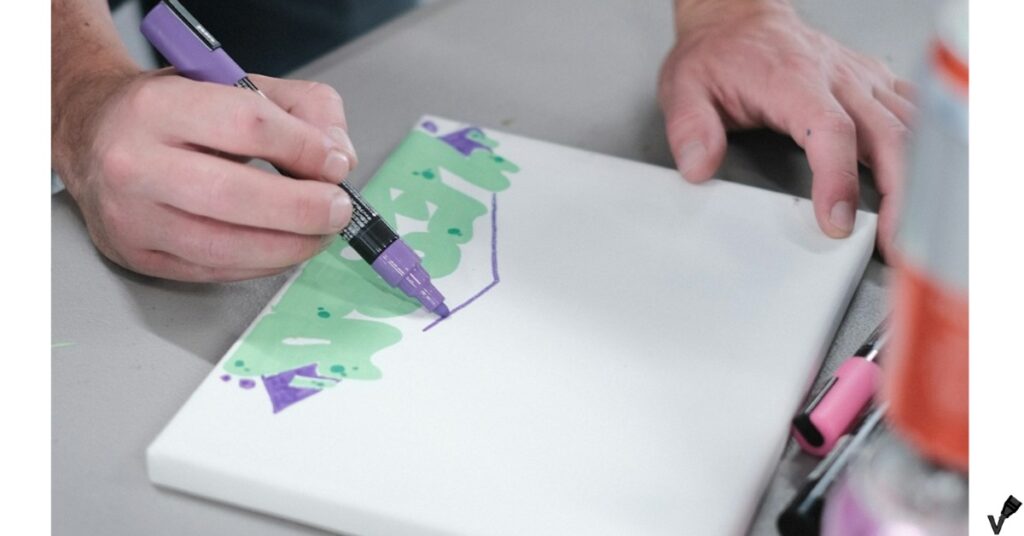Acrylic paint pens aren’t just a trend—they’re a game-changer. Like everything in art, the tools evolve, and so should we. If you’ve been sticking to brushes and tubes, maybe it’s time to rethink your routine. Acrylic paint pens unlock new ways to express creativity on canvas, rocks, glass, and more. They’re for the perfectionist who craves detail and the free spirit who just wants to see what happens next. So grab a set, break your creative boundaries, and let these vibrant, versatile pens show you what’s possible.
- Acrylic Paint Pens: Understanding the Differences Between Acrylic and Oil-Based Markers
- Choosing the Right Acrylic Paint Pens for Your Art Projects
- How to Use Acrylic Paint Pens on Different Surfaces: From Paper to Glass
- The Best Techniques for Blending and Layering with Acrylic Paint Pens
- Exploring the Types of Nibs in Acrylic Paint Pens: Fine, Bullet, and Brush Nibs
- Crafting with Acrylic Paint Pens: Creative Ideas for Beginners
- Lightfastness and Durability of Acrylic Paint Pens: What You Need to Know
- How to Maintain and Care for Your Acrylic Paint Pens for Longevity
- Popular Brands of Acrylic Paint Pens: A Comparison of Performance and Value
- Acrylic Paint Pens in Professional and Hobbyist Art: Practical Tips and Tricks
- Conclusion
- FAQs
Acrylic Paint Pens: Understanding the Differences Between Acrylic and Oil-Based Markers
Choosing between acrylic paint pens and oil-based paint markers can be a game-changer for your creative process. Acrylic paint pens are water-based, making them ideal for artists who need quick drying times and the ability to layer without smudging. Since they are water-based, they’re also more forgiving, allowing for easy cleanup and vibrant color application.
On the other hand, oil-based markers are permanent paint pens that offer deeper saturation but take much longer to dry. They have a smooth consistency but require more skill and patience because of their slow drying nature. Acrylic paint markers offer versatility across many surfaces, while oil-based markers are more suitable for heavier-duty materials like metal or ceramics. Sharpie Oil-Based Paint Markers are probably the most used and known oil-based pens, and we have a detailed review of that set on our website.

In a nutshell, if you’re looking for flexibility in your art, acrylic markers give you the control and adaptability to work on various surfaces, especially when you’re trying new artistic mediums. Whether you’re using acrylic paint pens for wood or working with paint pens for canvas, acrylic markers are usually the go-to for most multi-surface art projects.
Choosing the Right Acrylic Paint Pens for Your Art Projects
The best acrylic paint pens are determined by your project’s demands. If you are working on intricate designs, fine tip acrylic pens give you the precision needed to achieve delicate details. For bolder projects like murals or large canvases, consider acrylic marker pens with broader nibs that allow more paint coverage in fewer strokes.
| Pen Type | Best For Surfaces | Example | Use Cases |
|---|---|---|---|
| Fine Tip | Detailed, small work | Paper, canvas, fabric | Sketches, intricate designs |
| Bullet Nib | Versatile applications | Wood, canvas, rocks | Posters, DIY home decor |
| Brush Nib | Broad strokes, calligraphy | Glass, metal, ceramics, canvas | Murals, calligraphy, fine art |
When selecting a set, consider the opacity and color range of the pens. Look for brands that offer vibrant paint pens to ensure the colors pop, regardless of the surface. Some brands, like Grabie Acrylic Markers or the Arrtx Acrylic Paint Pens, offer vibrant options, perfect for adding flair to your designs.
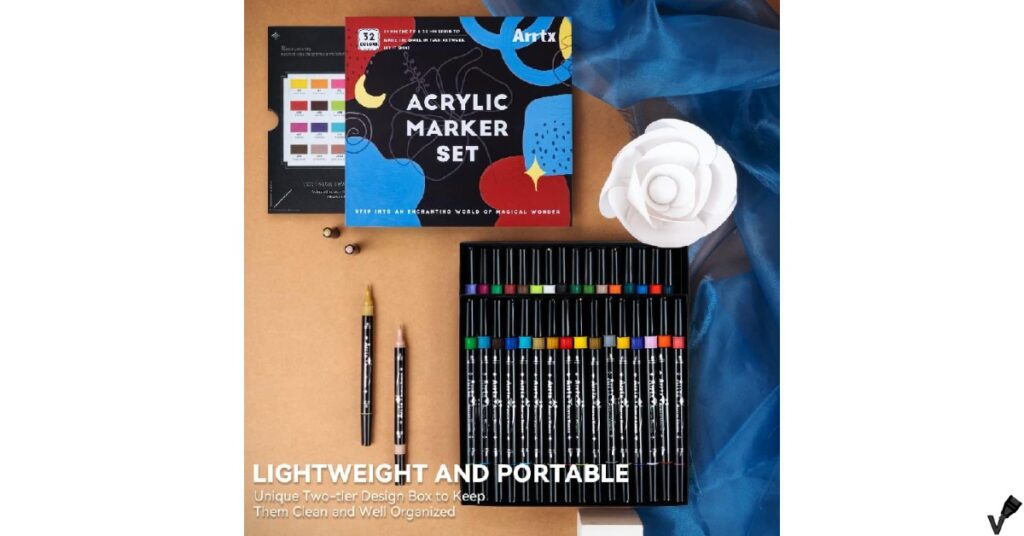
Finally, keep in mind the type of surface you’re working on. For example, if you’re tackling a rock painting project, acrylic pens for rock painting will work better than traditional markers because they are designed for rough textures. Alternatively, waterproof paint pens are a fantastic option for outdoor or high-traffic surfaces, as they provide durability in various weather conditions.
How to Use Acrylic Paint Pens on Different Surfaces: From Paper to Glass
One of the primary advantages of acrylic paint pens is their ability to work on multiple surfaces. From paper to glass, these pens offer versatility that few other art tools can match. For beginners, it’s best to start on simple surfaces like paper, where multi-surface paint pens provide smooth coverage without worrying about uneven texture.
In the following video you can see the general steps to activate your Chalkola Acrylic Paint Markers, but it applies on almost, if not all, Acrylic Paint Pens:
When using acrylic paint pens on glass, always clean the surface to ensure the paint adheres properly. A light, even stroke will allow the paint to dry without streaking, and because acrylic paint pens dry quickly, it’s easy to layer colors. Whether using acrylic paint pens for glass or other slick surfaces, always let one layer fully dry before applying the next to avoid smudging.
For more textured surfaces, such as wood or rocks, make sure to use acrylic paint pens for wood or similar specialized pens that can absorb into the material. A tip from experienced artists is to lightly sand the wood for a smoother finish and prime the surface with a base coat if needed, ensuring the pen’s colors remain vibrant.
The Best Techniques for Blending and Layering with Acrylic Paint Pens
Blending and layering are two essential techniques for creating depth and richness in your artwork. When working with water-based paint pens, you’ll need to master the art of timing. Since acrylic markers dry quickly, it’s important to blend while the paint is still wet. You can achieve seamless blends by lightly overlapping colors and using a damp brush to soften the edges.
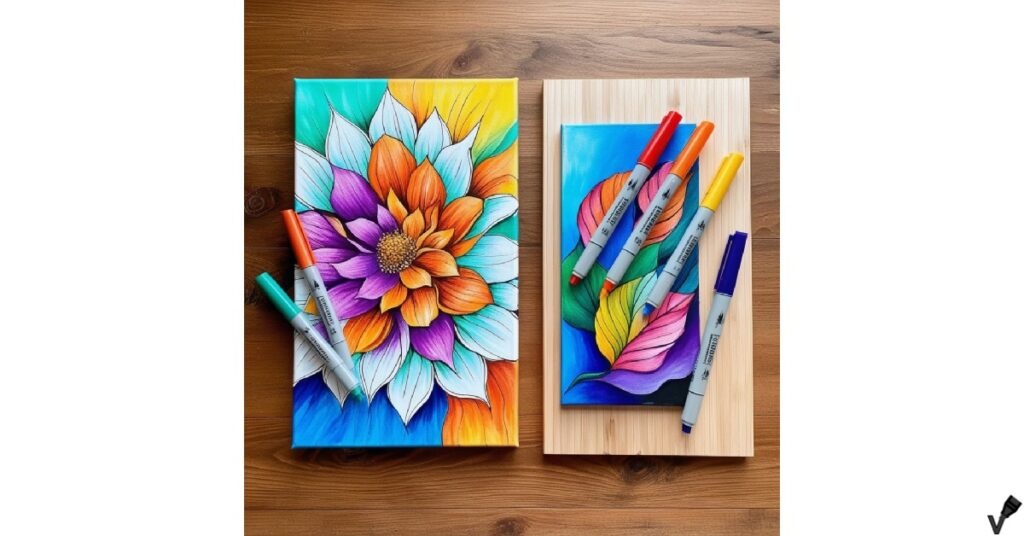
For layering, allow each layer of paint to fully dry before adding another. Fine tip acrylic pens are excellent for layering small details over larger areas of color, adding depth without disrupting the previous layers. If you want to add texture or shading, use cross-hatching or stippling techniques with your craft paint pens.
For more advanced techniques, consider using a blending medium. This helps to extend the drying time of the acrylic paint pens and allows for more controlled transitions between colors. Many artists love experimenting with this technique when working on projects like painted murals or detailed fine art on wood or canvas.
Exploring the Types of Nibs in Acrylic Paint Pens: Fine, Bullet, and Brush Nibs
Understanding the different types of nibs in acrylic paint pens can help you choose the right one for your project.
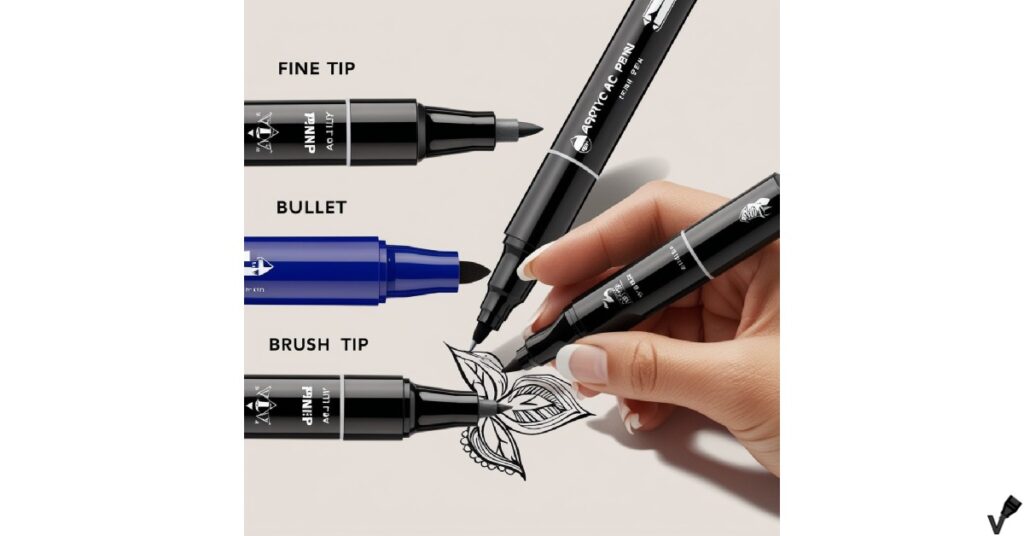
Fine tip acrylic pens
They are ideal for detailed work, making them a favorite for artists working on intricate designs or small crafts. These pens offer high precision, especially when creating detailed outlines or filling in small spaces.
Bullet nibs
They are versatile and excellent for both detail work and broader strokes. They are considered the middle ground between fine tip and brush nibs, allowing artists to switch between styles without changing tools. If you’re working on acrylic art supplies or larger surfaces, the bullet nib can give you clean, consistent lines.
Brush nibs
These on the other hand, provide the most flexibility. As seen in recent reviews, brush nibs can help artists create sweeping strokes with ease, as well as fill large areas quickly. They’re also great for calligraphy and creating fluid, organic shapes in larger art pieces. Grabie acrylic markers and other brands are increasingly incorporating brush nibs for those seeking more versatility.
Crafting with Acrylic Paint Pens: Creative Ideas for Beginners
Acrylic paint pens are the perfect gateway for beginners exploring the world of crafting. From customizing shoes to decorating plant pots, there’s no limit to what you can create. For those new to the medium, try simple projects like designing personalized cards or creating colorful bookmarks using acrylic markers. Their quick-drying nature and vibrant colors make them easy to work with.
You can also create beautiful DIY home decor. Use acrylic paint pens for glass to design stained glass-style jars, which can double as candle holders or vases. Acrylic pens for rock painting are great for fun outdoor activities, especially when crafting garden decor. Decorate rocks with floral patterns or inspirational quotes for a unique addition to your garden space.

Finally, paint pens for canvas are perfect for budding artists looking to start a new hobby. You can create small canvas wall art, experimenting with color and different blending techniques. The vibrant hues and smooth flow of vibrant paint pens will bring your imagination to life, even if you’re a total beginner.
Lightfastness and Durability of Acrylic Paint Pens: What You Need to Know
A key concern for artists is how long their work will last. The lightfastness of acrylic paint pens determines how resistant they are to fading over time. High-quality permanent paint pens offer better lightfastness, meaning the colors will remain vibrant even when exposed to sunlight. When shopping for acrylic paint pens, check if the brand provides lightfast ratings to ensure your artwork will stand the test of time.
Durability goes hand-in-hand with lightfastness. Waterproof paint pens offer enhanced resistance to water and other environmental factors, making them ideal for outdoor projects or items exposed to the elements. Brands that emphasize durability, like Grabie acrylic markers, are designed for long-lasting color, even when used on tough surfaces like wood, glass, or rocks.
For indoor artwork, where lightfastness might be less of a concern, you can still ensure your projects last longer by applying a protective sealant. Whether you’re working with acrylic paint pens for wood or creating vibrant murals on canvas, a clear coat of sealant will help protect your designs from wear and tear.
How to Maintain and Care for Your Acrylic Paint Pens for Longevity
Proper care for your acrylic paint markers will ensure they last through many art projects. One of the most important tips is to always store your markers horizontally. This ensures the paint remains evenly distributed and prevents clogging of the nibs. Keeping the caps tightly sealed when not in use will also preserve the flow of paint, especially for fine tip acrylic pens.
For nib maintenance, occasional cleaning can make a big difference. Acrylic paint tends to dry quickly, which can cause the nibs to clog if not cared for. Wipe the nibs with a damp cloth after each use, and for stubborn clogs, a gentle rinse with water can often do the trick. Some brands even offer replacement nibs, making it easy to swap them out if they become too worn or damaged.
Lastly, don’t forget to shake your markers before each use. This helps to mix the paint inside and prevent any uneven application. With a little care and attention, your multi-surface paint pens will be ready to create vibrant works of art for years to come.
Here is a maintenance checklist that outlines tasks for cleaning, storing, and reviving acrylic paint pens to ensure they last longer:
| Maintenance Task | Frequency | Method |
|---|---|---|
| Clean Nibs | After each use | Wipe nibs with a damp cloth to remove dried paint |
| Store Horizontally | Always | Keep pens flat to ensure even ink distribution |
| Cap Tightly | After each use | Prevent ink from drying by securing the cap immediately |
| Shake Before Use | Before each use | Shake to mix the paint for even flow and color consistency |
Popular Brands of Acrylic Paint Pens: A Comparison of Performance and Value
When it comes to choosing acrylic paint pens, brand matters. Popular brands like Posca, Chalkola, and Grabie acrylic markers dominate the market with their reputation for quality and performance. Posca markers are known for their bold colors and smooth application, making them a favorite among both professional artists and crafters. They’re a bit pricier, but the results speak for themselves.
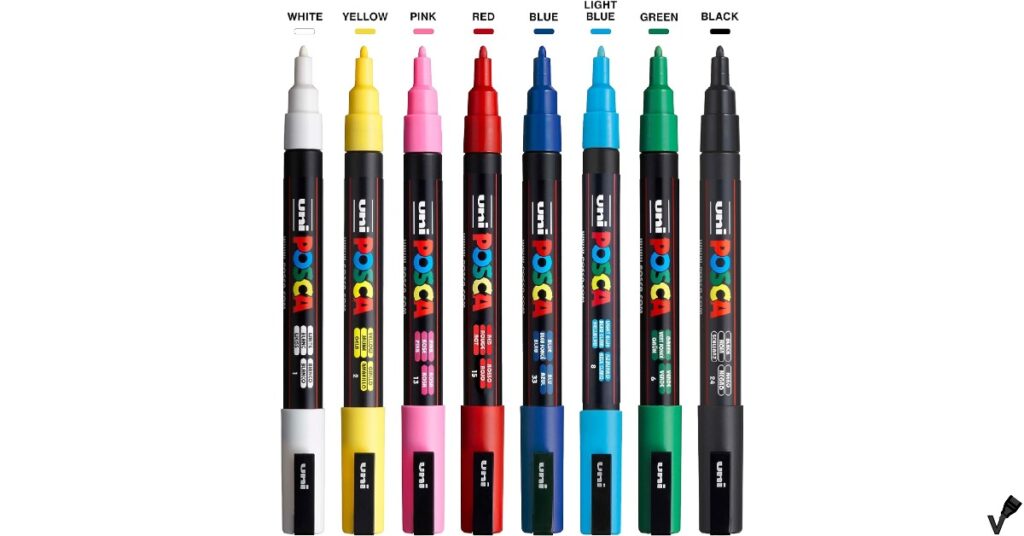
| Brand | Price Range | Color Vibrancy | Lightfastness | User Rating |
|---|---|---|---|---|
| Posca | High | Excellent | High | 4.8/5 |
| Chalkola | Mid | Very Good | Medium | 4.5/5 |
| Grabie | Budget | Good | Medium | 4.3/5 |
On the more affordable side, Chalkola offers a great balance of quality and price. Their acrylic marker pens work well for both beginners and experienced artists alike, providing a consistent flow of paint with each stroke. They’re perfect for those looking to explore new surfaces without breaking the bank.
For a lesser-known but equally high-quality option, Grabie acrylic markers have been gaining popularity for their reliability and range of colors. They are perfect for artists working on multi-surface projects like glass or wood and offer excellent value for the price.
Acrylic Paint Pens in Professional and Hobbyist Art: Practical Tips and Tricks
Acrylic paint pens have become an essential tool in both professional and hobbyist art. Professionals love them for their precision, ease of use, and vibrant colors that bring any artwork to life. When using acrylic paint markers in professional settings, one of the key tricks is layering. By allowing each layer to fully dry, you can build depth and dimension without worrying about the colors blending too quickly.
For hobbyists, these pens open up a world of creativity. From decorating household items to creating unique gifts, acrylic pens allow for endless possibilities. A great tip for beginners is to start with small projects like painting rocks or simple canvases before moving on to more complex works like furniture or large wall art.
One last tip: always test your paint markers on a small area of your surface before diving into the project. This ensures you get a feel for how the paint will interact with the material, giving you confidence and control over your masterpiece. Whether you’re a professional or a weekend crafter, acrylic paint pens are an incredible tool for unleashing your inner artist.
In the following video, which I like, Kasey Golden is giving nice tips like how to create a gradient, shade, and refill the Posca Pens, most of those tips applies on other Acrylic Markers:
Conclusion
In conclusion, Acrylic Paint Pens are an incredibly versatile tool that can elevate your artistic projects, whether you’re a seasoned professional or just getting started. From choosing the right pens for different surfaces to mastering techniques like blending and layering, these creative tools offer endless possibilities for expression. The quick drying times, vibrant colors, and ease of use make acrylic paint pens ideal for everything from intricate designs to bold, large-scale artwork.
If you’re ready to unlock your inner artist, it’s time to grab a set and start experimenting. Whether you’re crafting at home or creating fine art, acrylic markers are the perfect companion. If you found these tips helpful, why not share this post with your fellow creators or leave a comment below with your favorite acrylic paint pen projects? Let’s keep the inspiration flowing!
FAQs
-
What surfaces can acrylic paint pens be used on?
Acrylic paint pens are versatile and can be used on a wide range of surfaces, including paper, canvas, wood, glass, rocks, ceramics, and even fabric. They provide vibrant colors and durable coverage across these materials. -
How do I blend colors with acrylic paint pens?
To blend colors, apply one color while it’s still wet and then quickly apply the second color. You can also use a damp brush to soften the edges for a smooth transition. Acrylic paint pens dry quickly, so timing is crucial for effective blending. -
Are acrylic paint pens permanent?
Yes, most acrylic paint pens are permanent once they dry. They are water-based and provide a durable, waterproof finish, especially on porous surfaces like wood and canvas. Applying a clear sealant can help protect artwork on non-porous surfaces like glass or ceramics. -
How can I maintain and store acrylic paint pens?
To maintain acrylic paint pens, store them horizontally to prevent uneven ink distribution. Ensure caps are tightly sealed after each use to avoid drying out the nibs. For cleaning, wipe the nib with a damp cloth after use to prevent clogging. -
What are the differences between fine tip, bullet nib, and brush nib acrylic paint pens?
Fine tip pens are ideal for intricate details and precise lines, bullet nibs provide versatility for both small and medium coverage, while brush nibs allow for broad strokes and smooth, flowing lines, making them perfect for calligraphy and larger projects.

